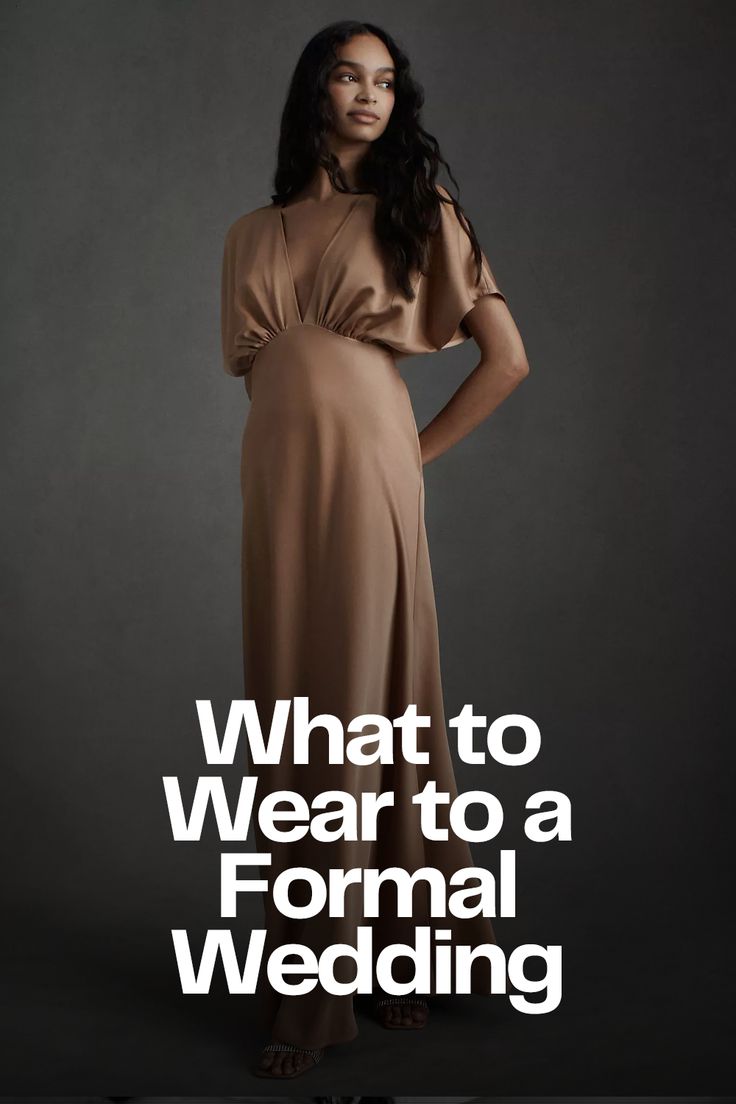Deciphering the sartorial enigma that is “formal wedding attire” can feel like navigating a labyrinthine dress code. It’s a realm where hemlines and fabrics whisper volumes, where etiquette dictates ensemble choices, and where the goal is to strike a harmonious chord between sophistication and celebratory spirit. Understanding the nuances ensures you’re dressed appropriately, showing respect for the occasion and the happy couple. Formal attire, at its heart, is about honoring the significance of the event through elevated presentation.
Unveiling the Essence of Formal: A Deeper Dive
Formal wedding attire is more than just a directive; it’s a tapestry woven from tradition, expectation, and an unspoken language of elegance. Think of it as an invitation to participate in a carefully orchestrated symphony of style. The interpretation, however, isn’t monolithic. The venue, the time of day, and the overall aesthetic of the wedding all contribute to the specific expectations. Are we talking about a black-tie optional affair, a formal daytime garden party, or an evening soiree in a grand ballroom? The answer to these questions acts as a compass, guiding your sartorial choices.
For Women: Navigating the Gown Galaxy
Ladies, the world of formal attire offers a spectrum of possibilities, ranging from floor-length gowns that shimmer like captured starlight to sophisticated cocktail dresses that exude understated chic. Fabric choice is paramount. Opt for luxurious textures such as silk, chiffon, velvet, or lace. These materials lend an air of refinement and elevate the overall look. Embellishments, like subtle beading or delicate embroidery, can add a touch of personality without overwhelming the ensemble.
The length of the dress often depends on the time of day. Evening events typically call for floor-length gowns, while cocktail-length dresses (hitting at or below the knee) are perfectly acceptable for daytime or late afternoon celebrations. When selecting a silhouette, consider your body type and choose a style that accentuates your best features. A-line dresses are universally flattering, while empire waists can create a long and lean silhouette. Remember, comfort is key. You want to feel confident and radiant throughout the festivities. Shoes should complement the dress and be elegant without sacrificing comfort. Consider heels, dressy flats, or embellished sandals. Jewelry should be delicate and refined, adding a touch of sparkle without overpowering the overall look. A clutch or small evening bag is the perfect finishing touch.
For Men: Deciphering the Suit Spectrum
Gentlemen, formal wedding attire usually translates to a suit or tuxedo, depending on the specific instructions on the invitation. A tuxedo is the epitome of formal elegance, typically reserved for evening events. Opt for a classic black tuxedo with a bow tie, cummerbund, and patent leather shoes. A well-tailored dark suit is a versatile alternative that can be dressed up or down depending on the occasion. Navy, charcoal gray, and black are all excellent choices. Pair the suit with a crisp white dress shirt, a silk tie, and polished dress shoes. A pocket square can add a touch of personality and flair.
Fit is absolutely crucial. A well-tailored suit will make you look and feel your best. Make sure the shoulders fit properly, the sleeves are the correct length, and the pants break appropriately over your shoes. Accessories should be understated and elegant. A classic wristwatch, cufflinks, and a simple tie clip are all appropriate choices. Avoid anything too flashy or ostentatious.
The Nuances of Accessories: Completing the Composition
Accessories are the punctuation marks of your outfit, adding subtle emphasis and completing the overall picture. For women, jewelry should enhance, not overshadow, the dress. Consider a delicate necklace, elegant earrings, or a sophisticated bracelet. A clutch or small evening bag is essential for carrying essentials like lipstick, tissues, and your phone. For men, a classic wristwatch, cufflinks, and a pocket square can add a touch of personality and refinement.
Decoding the Invitation: Unraveling the Clues
The wedding invitation is your first and most important source of information. Pay close attention to the wording, as it often provides clues about the desired level of formality. Phrases like “black-tie optional” or “formal attire requested” indicate a higher level of dressiness. If the invitation is vague, don’t hesitate to reach out to the wedding party or the couple themselves for clarification. It’s always better to be overprepared than underdressed.
Beyond the Binary: Embracing Personal Style Within the Framework
While adhering to the guidelines of formal attire is important, there’s still room for personal expression. Choose colors, patterns, and accessories that reflect your individual style and personality. Don’t be afraid to experiment with different silhouettes and textures, as long as they remain within the bounds of formality. The key is to strike a balance between tradition and individuality, creating an ensemble that is both elegant and authentically you.
Ultimately, attending a wedding dressed in formal attire is a gesture of respect and celebration. By understanding the nuances of the dress code, you can ensure that you look and feel your best, allowing you to fully enjoy the joyous occasion.









Leave a Comment